Burma. Part I. Main detailsMapSeptember 28–October 2, 2013 A military junta seized power in the country in 1962 and remained in power until 2011. In 1989, the military government decided to change the country’s name to Myanmar. Some countries have recognized the new name (Russia), some haven’t (the US). I personally haven’t. 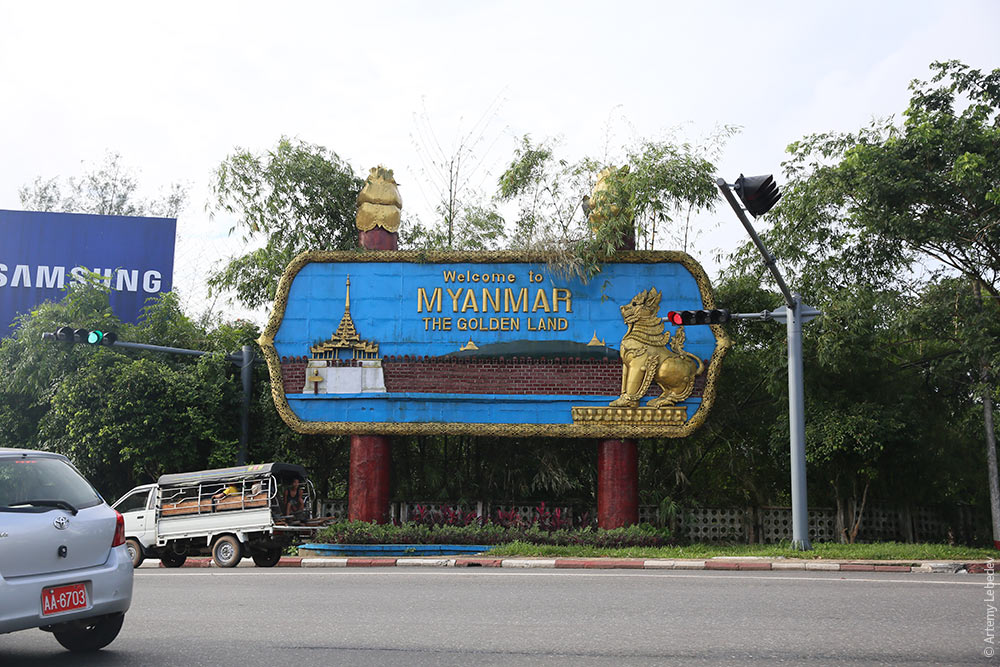 Two years ago, international economic sanctions completely crippled the military dictatorship, and Burma held its first democratic (sort of) elections. The dictatorship receded into the shadows, and the country began to change. 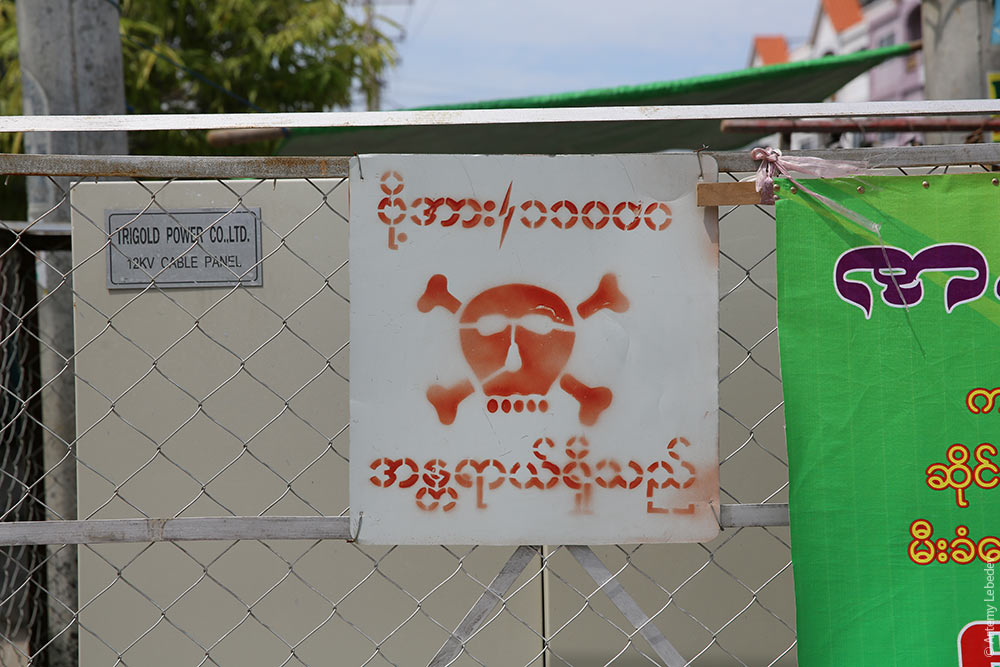 Up until that point, no effort had been required whatsoever. No one was allowed into the country anyway, and the license plates with Burmese script never left its borders. 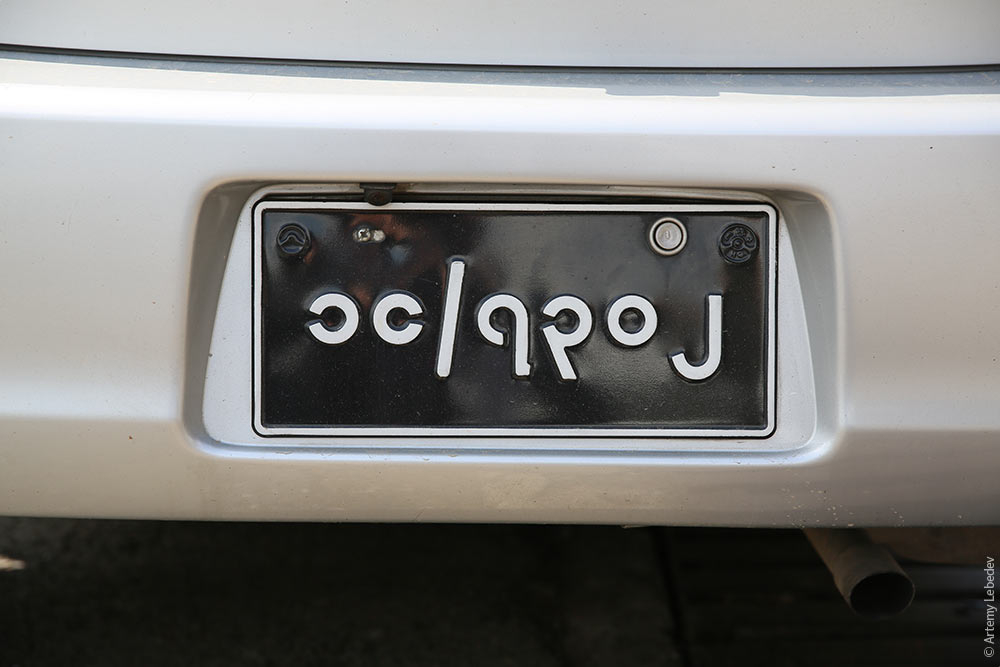 The traffic signs made sense only to the natives, because there weren’t any non-natives. 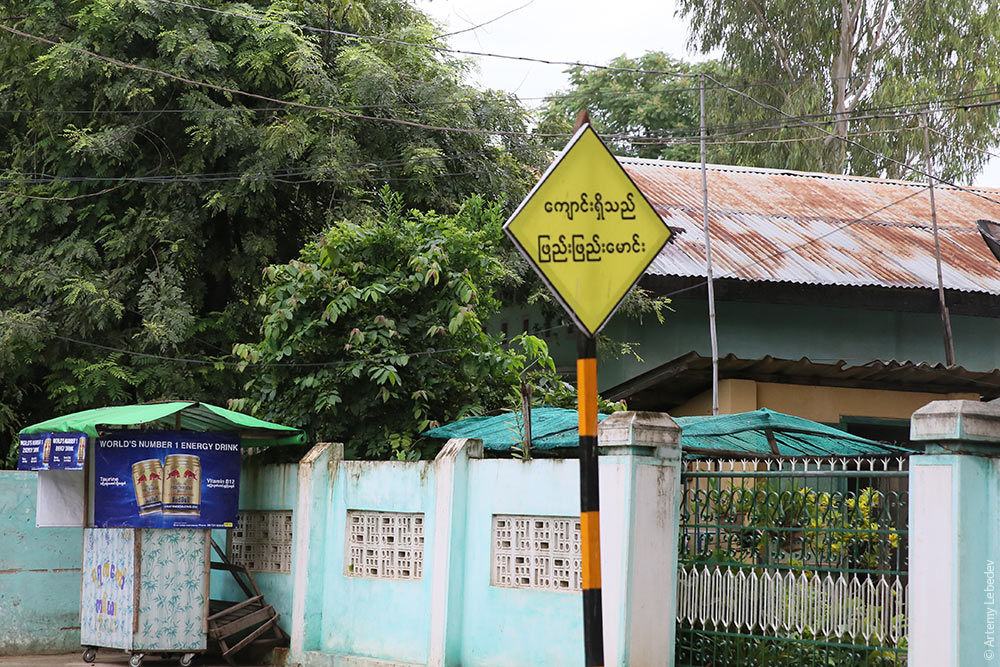 It was a vicious circle. 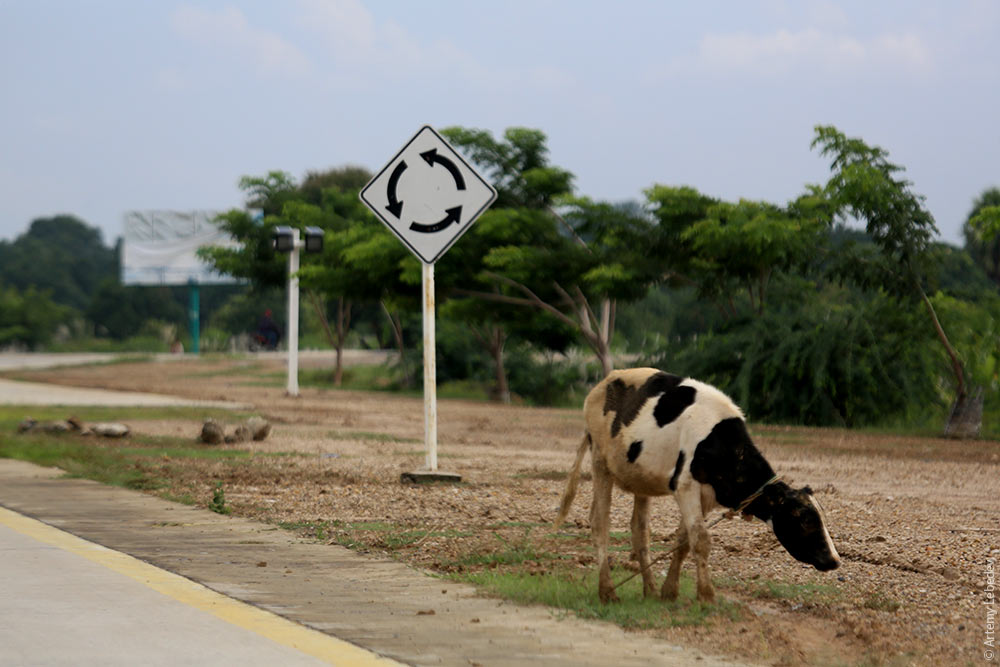 Now the girl on the “children” sign is all grown up and off to do her own thing, handbag in tow. 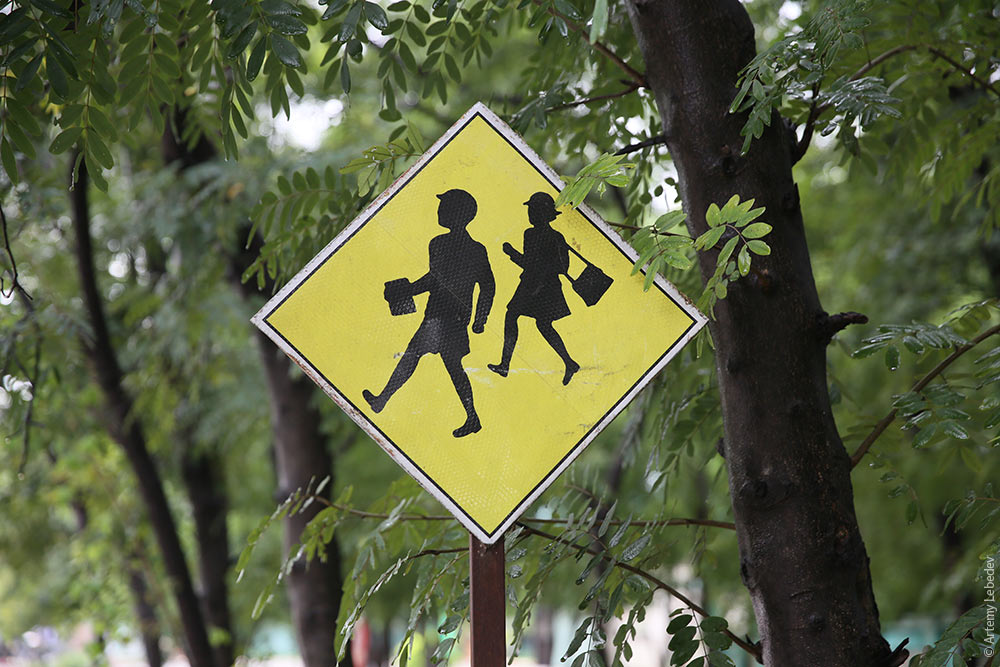 Pedestrian crosswalks are marked with a pair of legs (like in Australia or Ecuador). 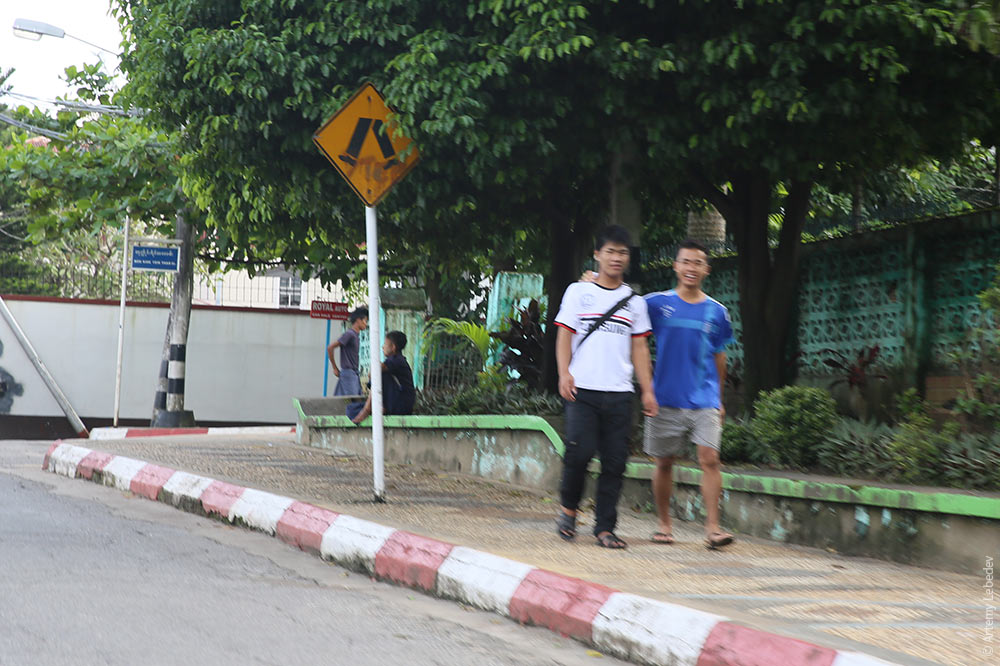 Just a year ago, it was practically impossible to find an ATM. Now there are already several. The country’s biggest bank has a surprisingly ugly logo with impossible spaces between the letters. 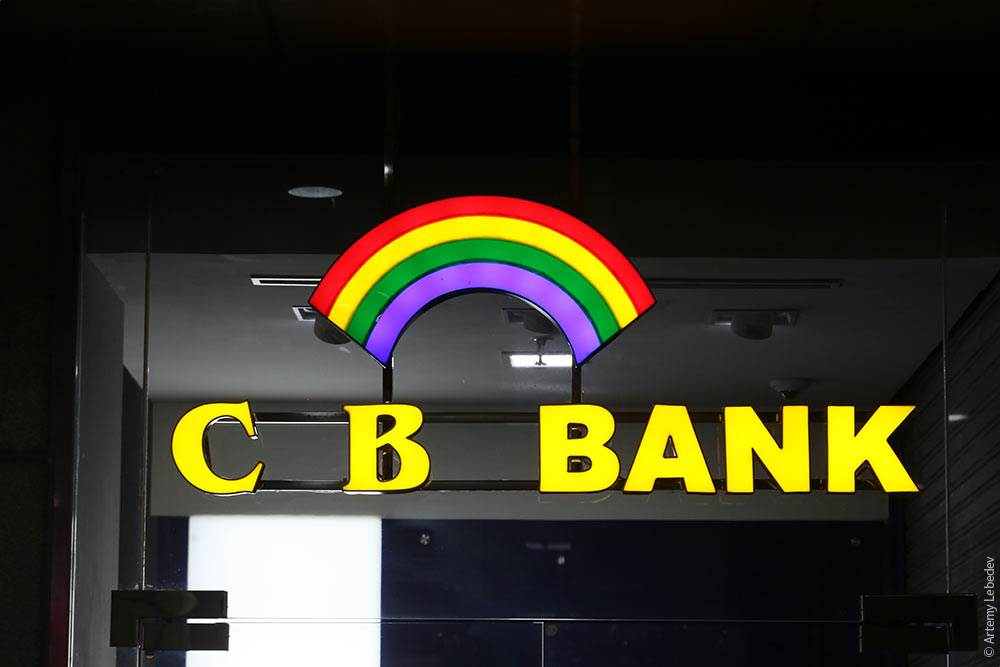 Don’t litter, get your car inspected regularly.  The joy of motherhood. 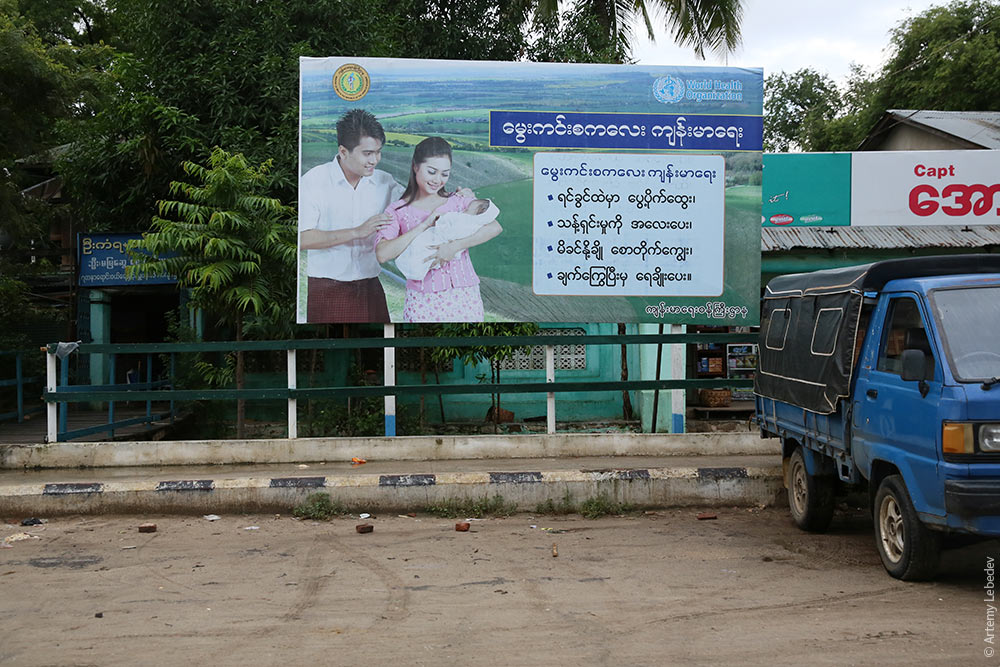 Many intersections have imitation traffic lights with PSAs on them. Red means stop, yellow means wait, green means go. There’s absolutely no point to this, it’s a sort of rules-of-the-road mantra. 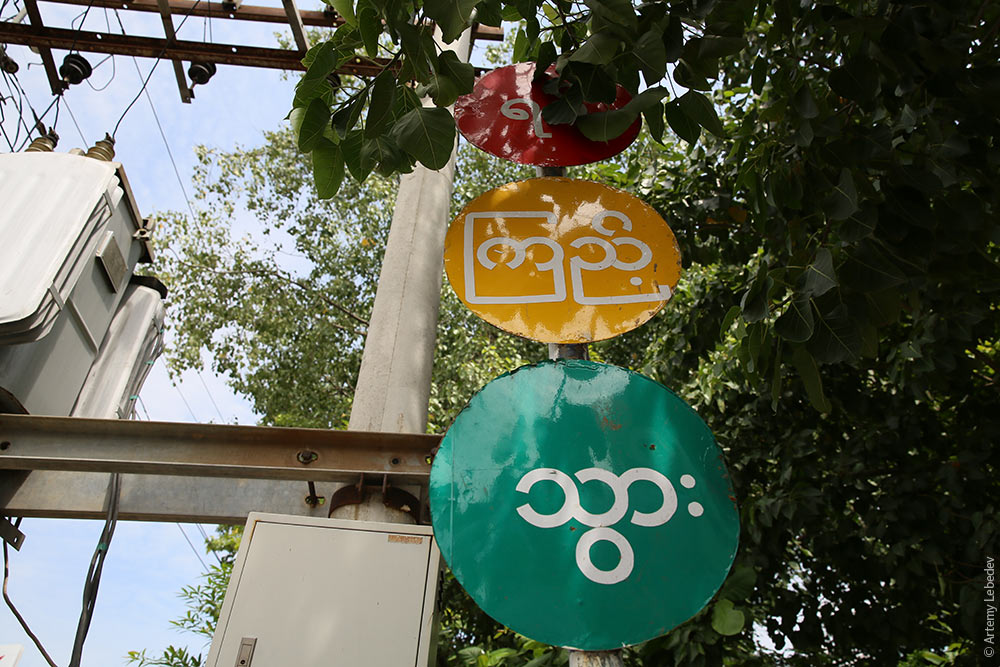 The post boxes look like school backpacks. 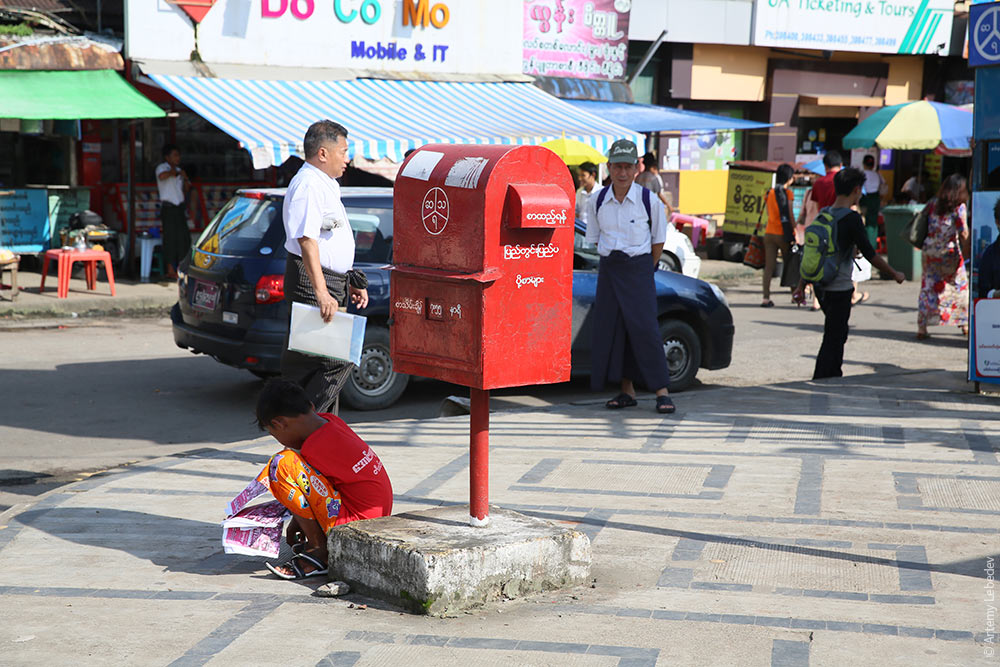 Vehicle inspection slips. 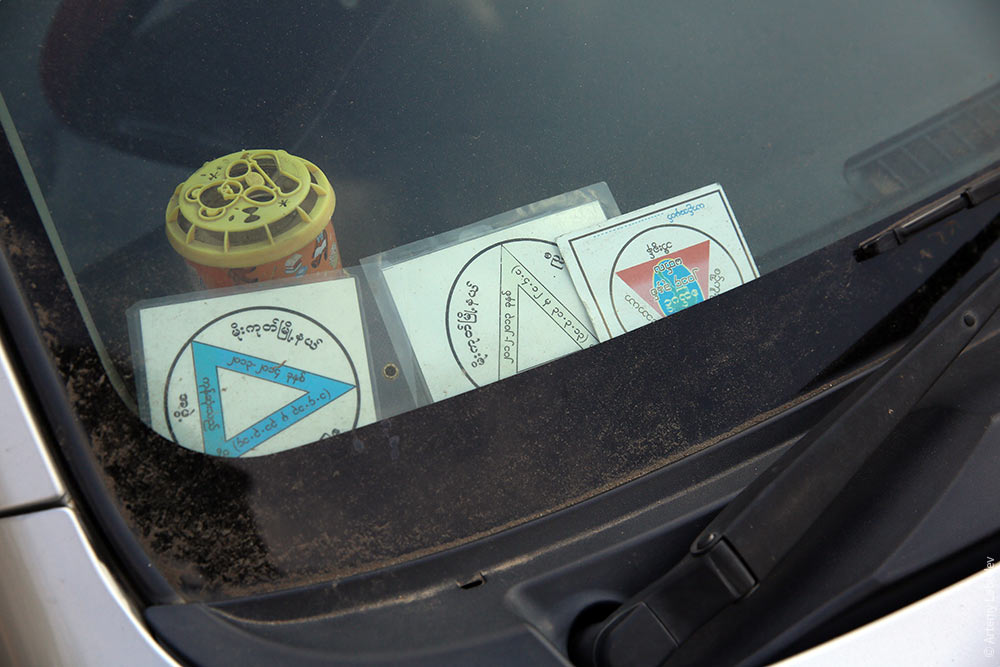 Many drivers decorate their rear windows with racetrack diagrams. It must be trendy. 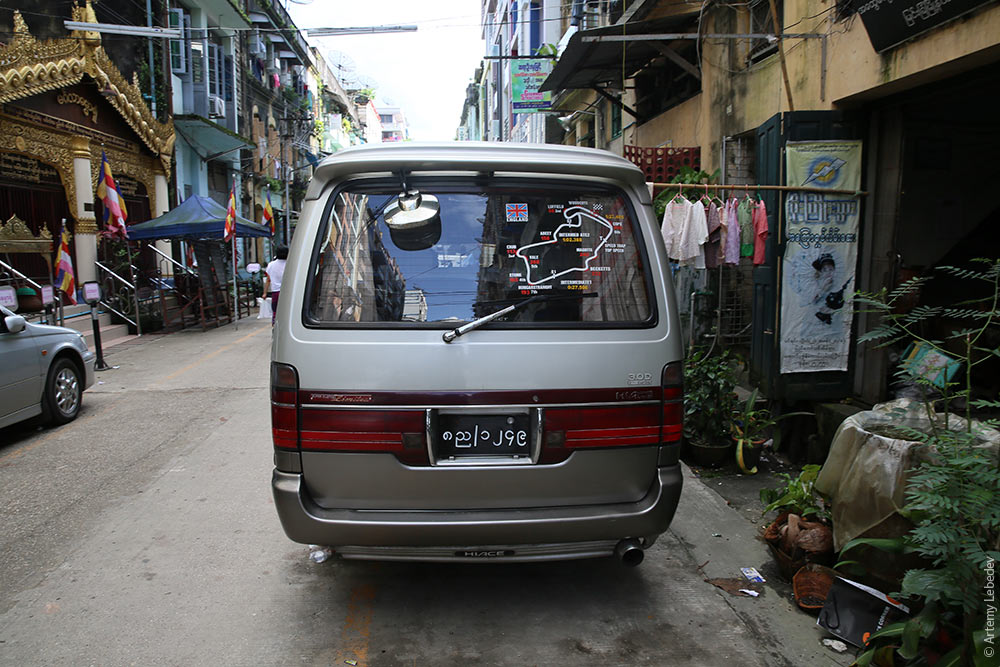 The main thing differentiating public transportation here is that it’s very public. Every minibus or truck carries as many people as can manage to hold on. 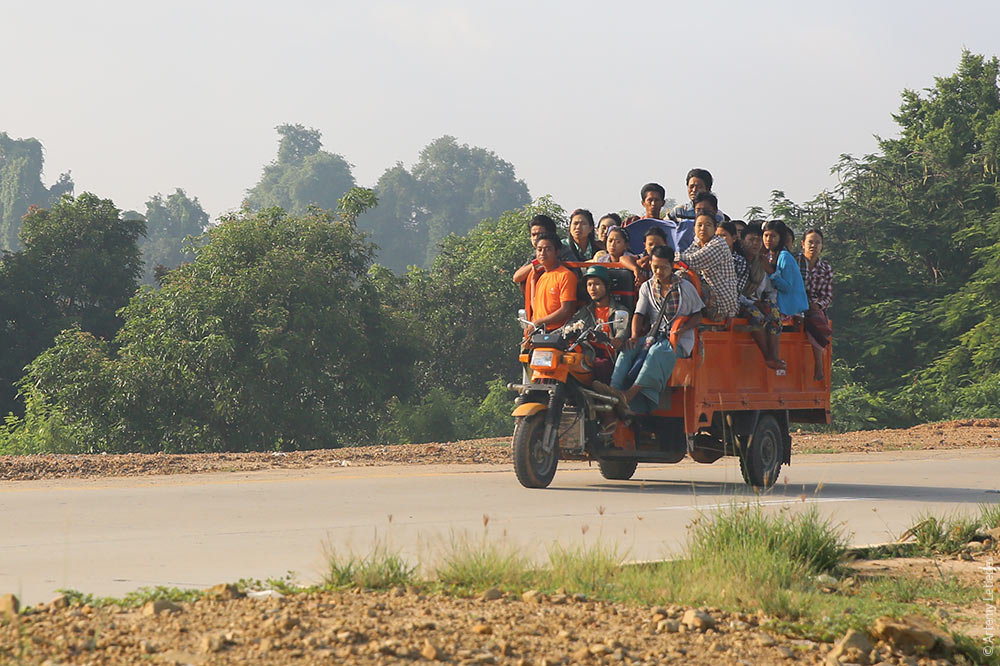 Every Burmese woman uses thanaka on her face on a regular basis. This is a powder made from the tree of the same name, mixed with water to form a paste and then applied to the faces of women and children. It protects skin from the sun and is also a Burmese symbol of beauty. (There’s a similar tradition in Mayotte.) 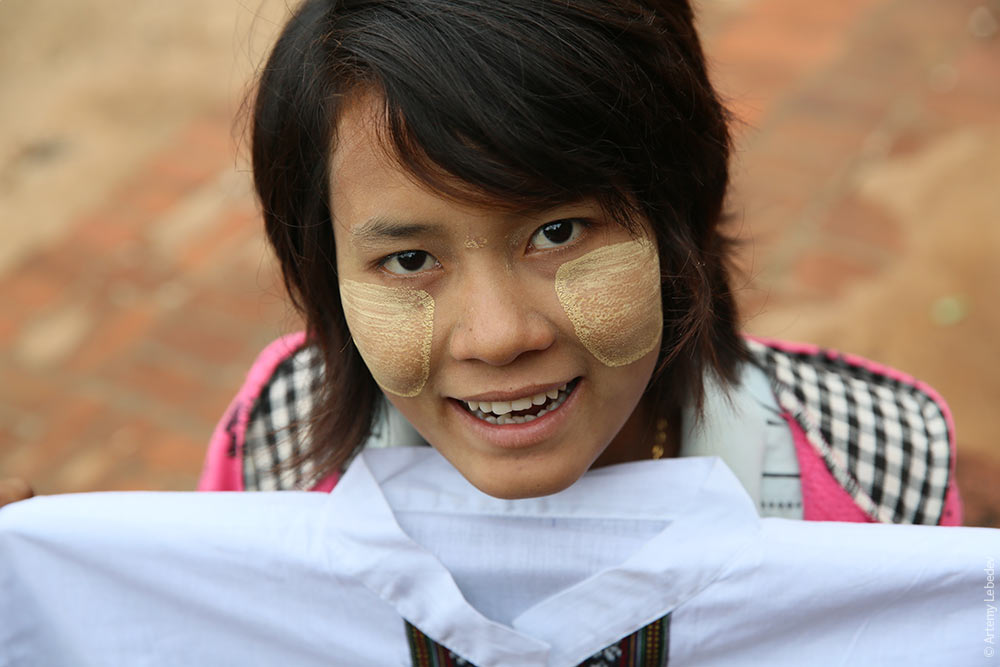 Jugs of free water are set up at every crossroads for passing travelers. Specially designated people make sure the supply doesn’t run out. (Sudan has a very similar tradition.) 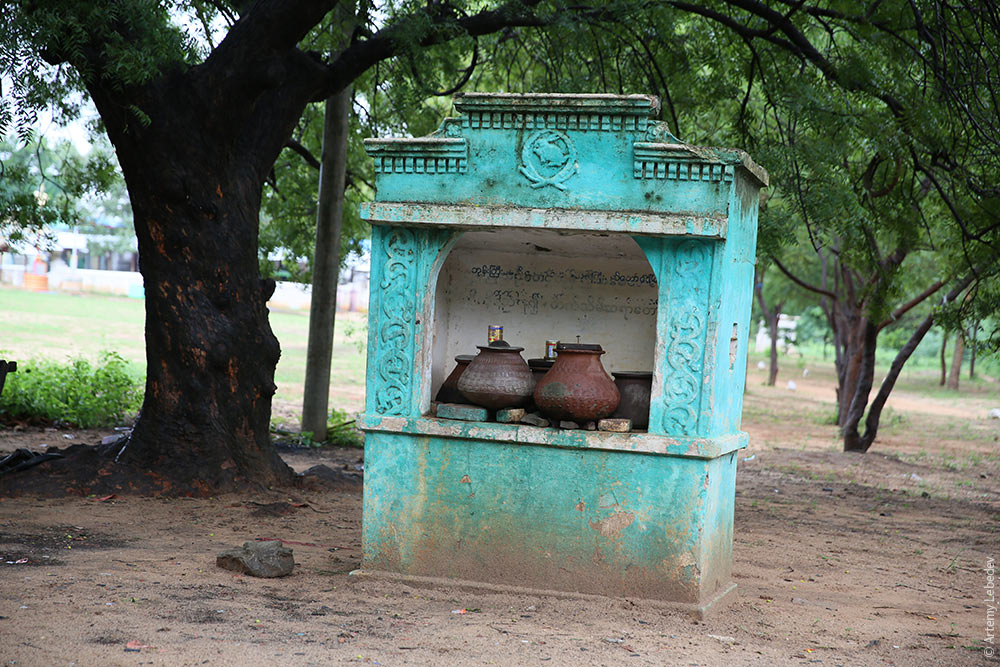 After a decade of isolation, Burma is catching up to its neighbors in leaps and bounds.  Soon there will be hardly anything left to differentiate it from Thailand or Laos. But for now, there are still a few things worth seeing. 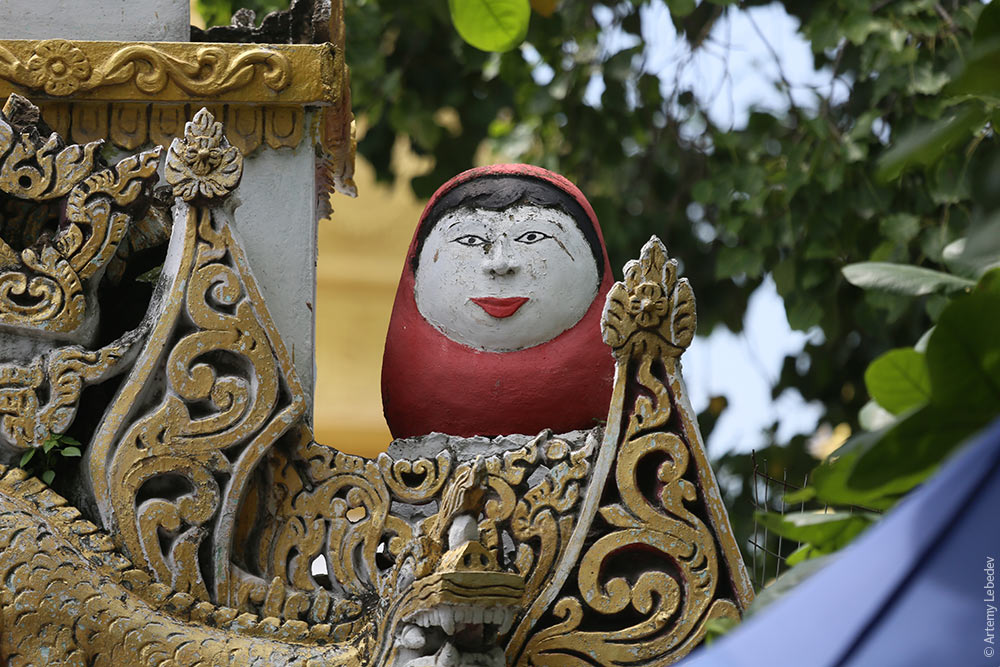 |